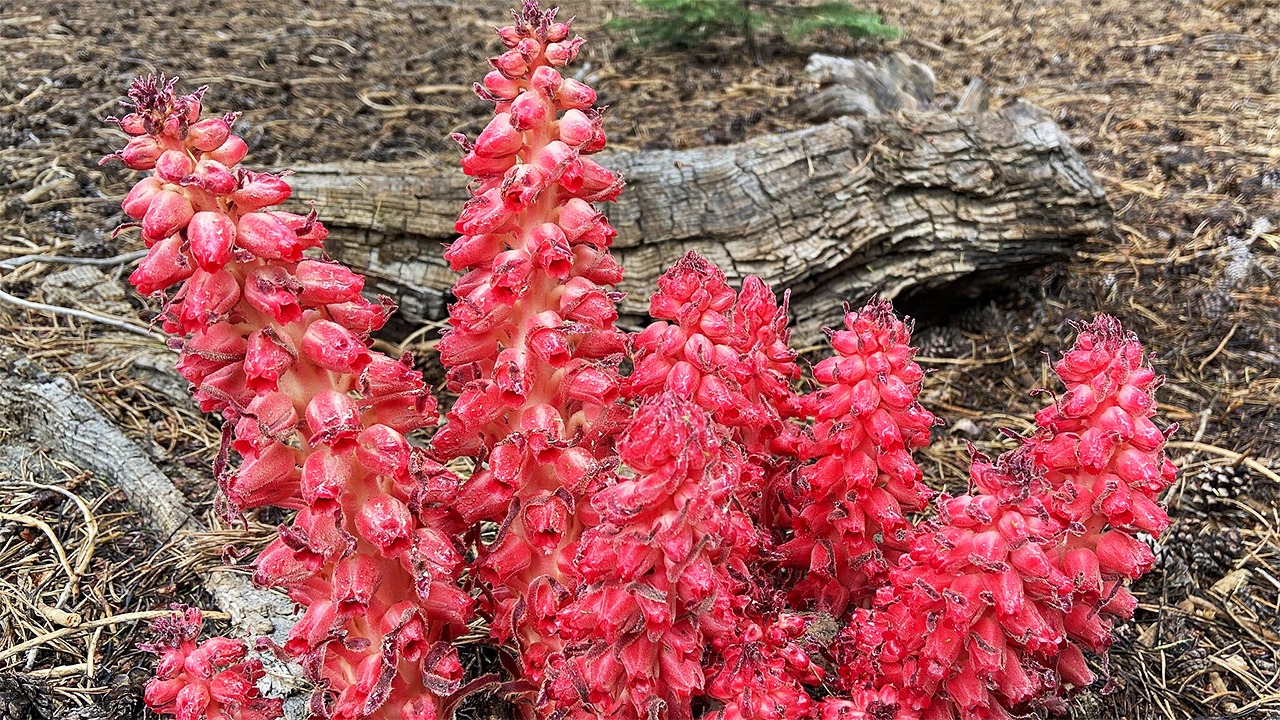
There is a group of flowering plants that bear flowers without the benefit of foliage known as monotropoids.
Related to heaths, the snow flower (Sarcodes sanguinea), is one of the most beautiful of monotropoids, and until recently was believed to emerge through snow, but actually it comes up after the snow melts and grows in conifer forests of the western United States.
Since they lack foliage, snow flowers obtain nutrients from mycorrhizal fungi that have attached to roots of nearby pines and other conifers. The relationship between the fungi and conifers is symbiotic, the fungi providing nutrients and water to the trees while the trees provide fixed carbon or sugars to the fungi.
The snow flower is parasitic, since it derives sustenance and nutrients from the fungi that attach to tree roots. The snow plant takes advantage of this mutualism between conifer and fungi by tapping into the network and stealing sugars from the photosynthetic partner by way of the fungus. This is known as mycoheterotrophy. Possibly the bright colored flowers attract pollinators to the shaded forest floor
